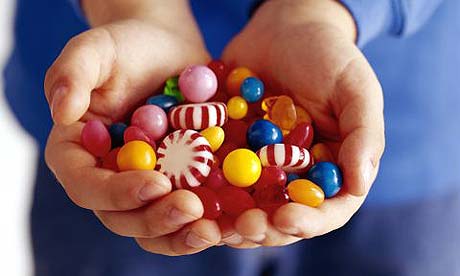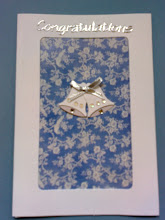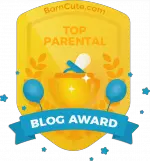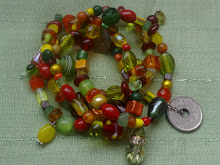
I have been becoming more aware over time of what goes into the food we consume, especially as I am now responsible for the diets of a whole family, including three who are too young to know any better.
I think it is in the peripheral consciousness of most parents that much of the food available is too processed with too many things that don’t sound very natural (Polyoxyethylene sorbitan monostearate (or E435) anyone?). More and more research is indicating that some such foods affect the behaviour of children, even suggesting that they might have a role in causing ADHD or chronic problems such as asthma or eczema (1, 2, 3, 4, 5)
I recently wrote off to a group called Action on Additives who are campaigning against the seven additives which they argue are amongst the most widely used and most damaging:
Tartrazine - E102 - artifical, yellow food colouring
Quinoline yellow - E104 - artifical, yellow food colouring
Sunset yellow - E110 - artifical, orange / yellow food colouring
Carmoisine - E122 - artifical, red food colouring
Ponceau 4R - E124 - artifical, red food colouring
Allura red - E129 - artifical red food colouring
Sodium benzoate - E211 - artifical preservative
They sent me a plastic card which lists the seven suspect additives to help me identify food that contains them when shopping.
 In the main they are bright food colourings (mainly reds, yellows and bright blues). So rather than whip the card out every time I pick up an item at the supermarket, I thought it would be easier to have a general rule. No brightly coloured sweets, drinks or food for the babes. They are still allowed a little chocolate which is still full of sugar and fat, but at least I know what I am getting and it is not chemicals (preferably a bit of the good stuff, so I try to stop by a Thornton’s on the way home and pick these lollies up on a Friday).
In the main they are bright food colourings (mainly reds, yellows and bright blues). So rather than whip the card out every time I pick up an item at the supermarket, I thought it would be easier to have a general rule. No brightly coloured sweets, drinks or food for the babes. They are still allowed a little chocolate which is still full of sugar and fat, but at least I know what I am getting and it is not chemicals (preferably a bit of the good stuff, so I try to stop by a Thornton’s on the way home and pick these lollies up on a Friday).
I think it is in the peripheral consciousness of most parents that much of the food available is too processed with too many things that don’t sound very natural (Polyoxyethylene sorbitan monostearate (or E435) anyone?). More and more research is indicating that some such foods affect the behaviour of children, even suggesting that they might have a role in causing ADHD or chronic problems such as asthma or eczema (1, 2, 3, 4, 5)
I recently wrote off to a group called Action on Additives who are campaigning against the seven additives which they argue are amongst the most widely used and most damaging:
Tartrazine - E102 - artifical, yellow food colouring
Quinoline yellow - E104 - artifical, yellow food colouring
Sunset yellow - E110 - artifical, orange / yellow food colouring
Carmoisine - E122 - artifical, red food colouring
Ponceau 4R - E124 - artifical, red food colouring
Allura red - E129 - artifical red food colouring
Sodium benzoate - E211 - artifical preservative
They sent me a plastic card which lists the seven suspect additives to help me identify food that contains them when shopping.
 In the main they are bright food colourings (mainly reds, yellows and bright blues). So rather than whip the card out every time I pick up an item at the supermarket, I thought it would be easier to have a general rule. No brightly coloured sweets, drinks or food for the babes. They are still allowed a little chocolate which is still full of sugar and fat, but at least I know what I am getting and it is not chemicals (preferably a bit of the good stuff, so I try to stop by a Thornton’s on the way home and pick these lollies up on a Friday).
In the main they are bright food colourings (mainly reds, yellows and bright blues). So rather than whip the card out every time I pick up an item at the supermarket, I thought it would be easier to have a general rule. No brightly coloured sweets, drinks or food for the babes. They are still allowed a little chocolate which is still full of sugar and fat, but at least I know what I am getting and it is not chemicals (preferably a bit of the good stuff, so I try to stop by a Thornton’s on the way home and pick these lollies up on a Friday).So far this has been fairly easy to stick to, it’s just trying to get everyone to buy into this way of thinking (so far husband and sisters are on message, mum and brothers-in-law might need a bit more persistent reminding).
The thing that really gets me though is the fact that such things are allowed in our food. This is why I am pleased that groups like Action on Additives, Children's Food Campaign and Netmums.com are making a noise about this matter.

































No comments:
Post a Comment